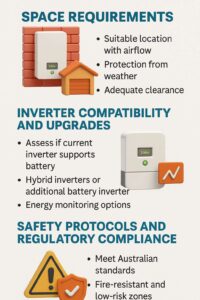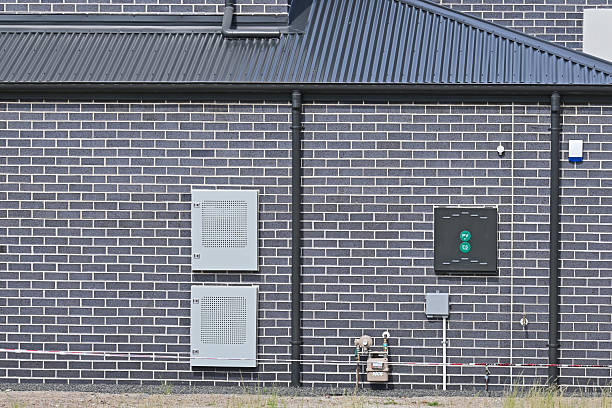As the uptake of residential solar grows, more Perth homeowners are looking to maximise energy independence through battery storage. Preparing your property for a solar battery installation involves more than just choosing a product—it requires practical planning around space, system compatibility, and safety compliance. This article outlines what to expect when getting ready for a professional battery installation in Perth.
Space Requirements for Battery Systems
Battery units need to be installed in a suitable location that ensures operational efficiency and safety. Installers will assess whether the space is compliant with current standards, focusing on factors such as airflow, protection from weather, and accessibility. Garages, utility rooms, and shaded external walls are common installation zones. The area must be dry, well-ventilated, and capable of supporting the unit’s weight, with adequate clearance (typically around 300mm) to allow for servicing. Where multiple batteries are used, more wall or floor space may be necessary. Some properties may require minor structural adjustments to meet these conditions.
Inverter Compatibility and Upgrades
One of the key technical steps in battery preparation is reviewing the inverter system. Not all existing solar systems are battery-ready. Installers will examine whether your current inverter can integrate with the battery or whether it needs to be replaced. Hybrid inverters support both solar and battery connections, while older string inverters may require the addition of a separate battery inverter. The chosen configuration—AC or DC coupled—affects installation complexity and cost. Newer systems also allow for energy monitoring apps, giving homeowners insight into charge levels, energy usage, and solar generation. A properly matched inverter ensures the reliability of your solar storage solution and aligns with long-term energy planning under solar battery installations Perth.

Safety Protocols and Regulatory Compliance
Battery storage systems must meet strict Australian safety standards, particularly AS/NZS 5139. This standard sets out requirements for battery enclosure materials, separation distances from living areas, electrical isolation procedures, and thermal protection. For example, lithium-ion batteries must be installed on fire-resistant surfaces and in low-risk zones away from habitable rooms. Installers also check fault detection systems, temperature monitoring, and emergency shutdown features. Only licensed electricians with battery-specific accreditation should carry out this work. Ensuring compliance not only protects property and occupants but also meets insurance and warranty conditions. Safety is a central consideration in any solar power Perth upgrade involving battery storage.
Conclusion
Preparing your Perth home for battery installation is a step-by-step process that demands proper planning, technical assessment, and compliance with national regulations. By ensuring adequate space, confirming inverter suitability, and meeting safety standards, homeowners can confidently transition to solar energy storage. Partnering with experienced installers guarantees a smooth, efficient process and a system built for long-term performance and resilience.

